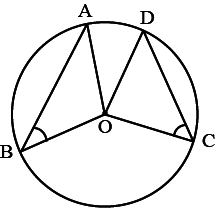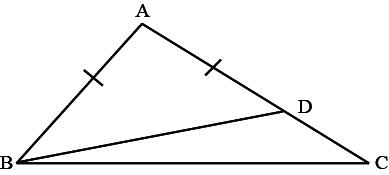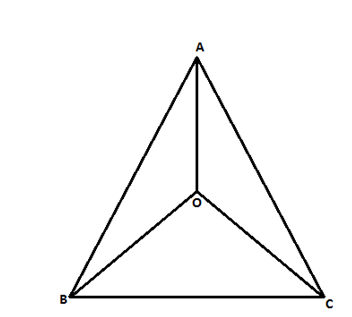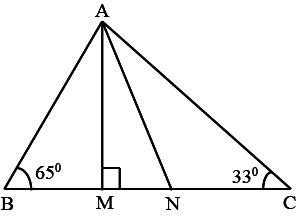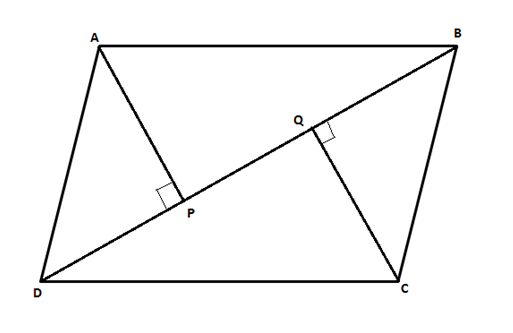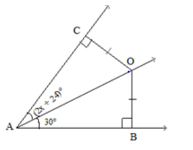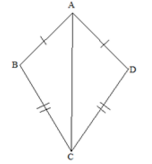9th Grade > Mathematics
TRIANGLES MCQs
:
A and C
In ΔAOB and ΔAOC,AB=AC(Sides of isosceles ΔABC).OB=OC(Sides of isosceles ΔOBC).AO is common∴ΔAOB≅ΔAOC(by SSS congruence)
And ∠ABO=∠ACO ( By CPCT)
:
C
In given figure,
∠BAC+∠ABC+∠ACB=180∘(Angles of same triangle)⇒∠BAC+65∘+33∘=180∘⇒∠BAC=82∘
∠CAN=∠BAC2=41∘(Given that AN is an angle bisector).Now, ∠CAN+∠ANC+∠ACN=180∘(Angles of same triangle)⇒41∘+∠ANC+33∘=180∘⇒∠ANC=106∘
∠ANC+∠ANM=180∘(Linear pair)⇒106∘+∠ANM=180∘⇒∠ANM=74∘
∠ANM+∠AMN+∠MAN=180∘⇒74∘+90∘+∠MAN=180∘⇒∠MAN=16∘.
:
C
In ΔAPB and ΔCQD,AB=CD (opposite sides of a parallelogram).∠ABP=∠CDQ (alternate angles).∠APB=∠CQD (both are right angles).∴ΔAPB≅ΔCQD
(using AAS criterion)
Hence, statement 1 is correct but statement 2 is false
:
B
∠ POY = ∠ OYZ (alternate angles)
∠Y is bisected, so ∠ POY = ∠ PYO
Hence, PY = PO
So, △YPO is isosceles
Also, it is given that ∠XYZ is acute, so any angle which is half of it (bisected by OY) is less than 45∘.
or ∠ PYO + ∠OYZ < 90∘
Hence, the third angle of the △YPO i.e. ∠ YPO will be obtuse to satisfy angle-sum property of a triangle.
Hence, △YPO is isosceles but not right angled.
:
C
Given, in △NVY, NV = VY.
Then, ∠VYN=∠YNV.
[angles opposite to equal sides of a triangle are equal]
Using angle sum property of a triangle, we get:
∠NVY+∠VYN+∠YNV=180∘
So, ∠NVY+2∠VYN=180∘.
It is also given that VY≠YN. Hence the options ∠NVY=∠VYN and ∠NVY=∠YNV are not correct.
:
In ΔAOC and ΔAOB,OC=OB(Given)∠OBC=∠OCA(Both angles are right angles)And AO is common side.Hence, ΔAOC≅ΔAOB(RHS congruence)∴∠CAO=∠BAO(CPCT)⇒2x+24=30⇒x=3⇒x−3=0
:
D
Two triangles can't be congruent if any two sides and one angle of one are equal to any two sides and one angle of the other.
They will be congruent when the angle is included between the equal pair of sides. This is the SAS condition of congruency of triangles.
The SAS congruence rule states:
Two triangles are congruent if two sides and the included angle of one triangle are equal to the two sides and the included angle of the other triangle.
:
In the given figure, AD=AB(Given)DC=BC(Given)AC is common∴ΔADC≅ΔABC(SSS congruence)Hence, ∠ACD=∠ACB=30∘

